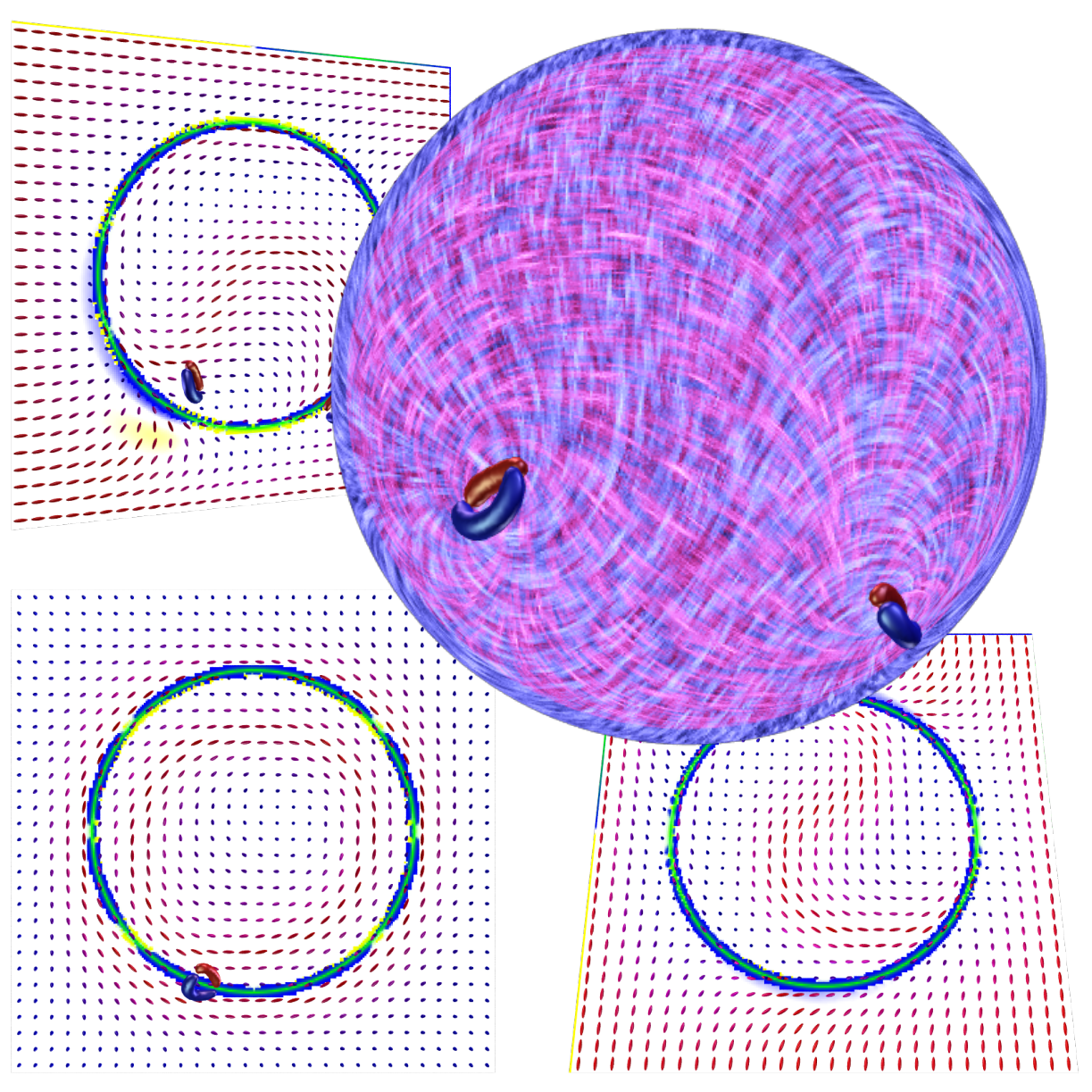In liquid crystal applications, boundary conditions are essential to ensuring suitable bulk molecular orientation and a deterministic response to external fields. Be it confinement to a droplet or a shell, a glass plate, or an interface with air or another liquid, proper surface alignment must be ensured—mechanically by rubbing, by chemical treatment that adds a layer of aligning molecules, by using photoalignment or even by leaving the surface untreated, using the intrinsic properties of the substrate itself. The anchoring can be classified as unidirectional (perpendicular homeotropic, or at oblique angles), or degenerate (planar or pre-tilted). However, if both substances at the interface are anisotropic, more diverse behaviour is expected. Here, we present a numerical simulation of a nematic droplet in a nematic host, and investigate behaviour of the director field and defects at the interface for different interfacial couplings. Finally, we compare the simulations to experimental images of discotic droplets in a calamitic nematic host.
Download a copy of the manuscript

